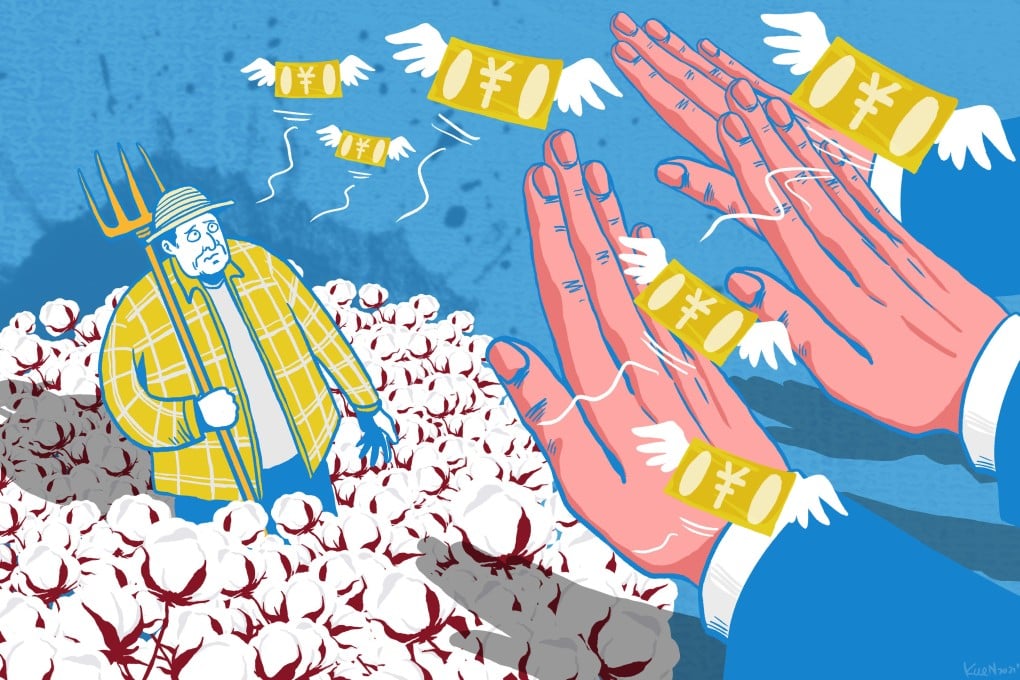Advertisement
Xinjiang cotton ban uncertainties weigh on Chinese farmers, smaller textile firms
- Some cotton suppliers in the restive Chinese region sold only half of their ginned cotton in previous years
- Xinjiang’s annual cotton output is about 5 million tonnes, accounting for 87.3 per cent of China’s cotton production last year
Reading Time:5 minutes
Why you can trust SCMP
99+

Mr Zhang runs a cotton-processing plant in the middle of Xinjiang province. Every year, from September to November, he purchases raw cotton locally and processes it into ginned cotton – separating the seeds and the fibres – and then sells it to traders and yarn plants.
And as a member of the Better Cotton Initiative (BCI) for more than five years, his business in Yuli county has benefited quite a lot from the Switzerland-based network.
However, while Zhang, who would only give his surname, was busy buying cotton from farmers last October, BCI announced that it was withdrawing from the restive Xinjiang region over concerns surrounding the alleged use of forced labour by Uygur Muslims in the government’s so-called re-education facilities.
Advertisement
The young entrepreneur, with more than a decade of experience in the industry, was shocked. In March 2020, the BCI had already told him that it would suspend their activities with licensed farmers in Xinjiang for last year’s cotton season due to “the complexity of the current international environment”.
But Zhang figured the suspension would last for just a year, and then everything would return to normal.
Advertisement
Advertisement
Select Voice
Choose your listening speed
Get through articles 2x faster
1.25x
250 WPM
Slow
Average
Fast
1.25x